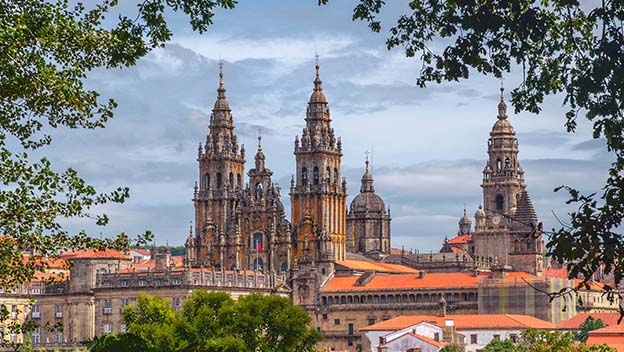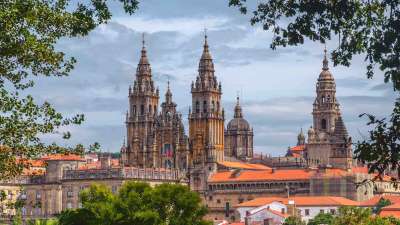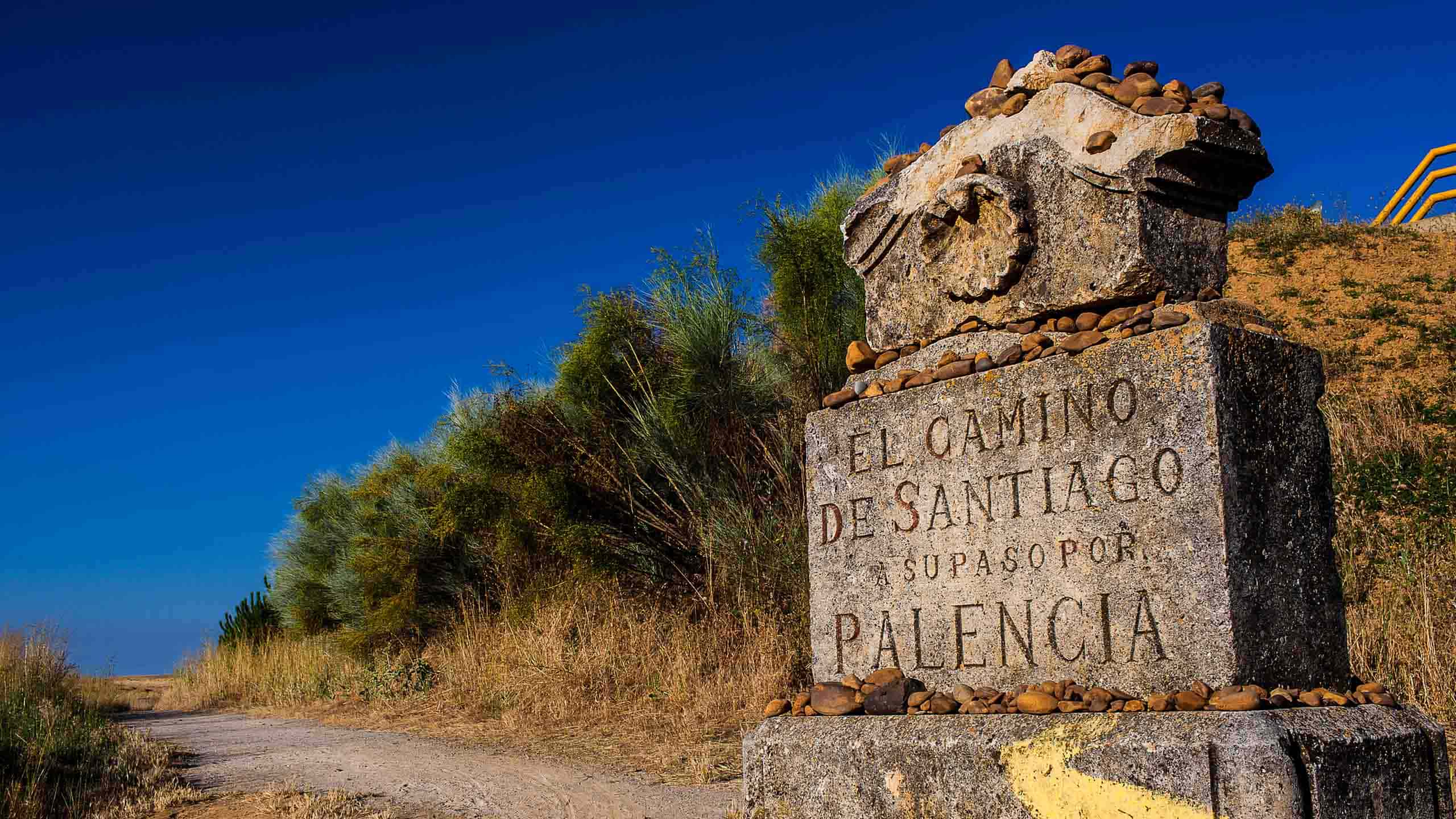As each moment slips by, the Camino de Santiago, or Way of St. James, continues to offer a spellbinding journey of devotion, resilience, and a timeless pursuit for meaning. This hallowed path leading to the revered shrine of Saint James in Santiago de Compostela is among the most renowned pilgrimage journeys in the world. Yet, the journey to the final resting place of Saint James isn’t tied to a single route but different paths, each offering distinct allure, historical significance, and marvelling landscapes.
Let’s explore the varied routes of the Camino, inviting you to choose your path and craft your own legend on this iconic pilgrimage. Let us be your compass in navigating these paths with our tailored self-guided and guided Camino walking options.
Routes of The Camino de Santiago

Photo credit: Sergey Golotvin
1. Camino Francés (The French Way)
Of all Camino routes, the Camino Francés or French Way, is considered the most iconic. This path stretches approximately 780 kilometres (485 miles) and breathes life into its journey from the French Pyrenees to the quaint town of Saint-Jean-Pied-de-Port. Within its stretch, a rich tapestry of experiences unfolds, including walking the lush vineyards of La Rioja and the mystical forest landscapes of Galicia.
Throughout the journey, you’ll encounter a lineup of charming villages, ancient monasteries, and vibrant cities like Pamplona León and Burgos, each adding a high level of intrigue to the pilgrimage’s storied history.
Interestingly, the last 100 kilometres (62 miles) of the Camino Francés is the most travelled section of the Camino routes, as pilgrims can obtain a certificate for completing this final stretch, a requirement for receiving the Pilgrim’s Certificate (Compostela).

Photo credit: AnaMOMarques
2. Camino Portugués Coastal Way
Starting from the vibrant city of Porto, the 620-kilometre (385 miles) Camino Portugués Coastal Way stretches to Santiago de Compostela, where the Atlantic is a companion. The path traces a coastal path, drifting along boardwalks that flirt with the sea and exploring estuaries where the land meets water. Over the journey, you’ll discover Baiona’s charming old town, Vigo’s lively port and historic core, and Pontevedra’s ancient splendour, amongst many other stunning landmarks. The final stretch of this path veers inland through enchanting woodlands, leading you through cosy villages and hamlets until you reach the historic embrace of Santiago de Compostela.
3. Camino del Norte (Northern Way)
The Camino del Norte, or Northern Way, is a raw, untamed symphony of adventure. Beginning in the vibrant Basque town of Irún and stretching a bold 825 kilometres (513 miles) to Santiago, this path clings to Spain’s wild northern coast. Here, the Atlantic roars and crashes against the rugged coastline while the Cantabrian Mountains rise like ancient sentinels against the sky.
Along this audacious trail, cities like San Sebastián and Bilbao pulse with electric energy, their streets alive with stories. Meanwhile, the quiet expanse of Asturias and Galicia offers a soothing balm, inviting deep reflection amidst nature’s raw, untamed beauty.
4. The Camino Primitivo: The Path Less Travelled
If a more solitary and rugged experience is what you desire, then the Camino Primitivo is the answer you seek. Known as the “Original Way,” it was the oldest route chosen by King Alfonso II in the 9th century and has remained largely unchanged over centuries. It features a distinct appeal, with paths trailing the rugged terrain of Asturias and Galicia into the majestic city of Lugo, famous for its Roman walls. The path then merges with the French Way in Melide, which spans an additional 50 km (30 miles) to Santiago. Its entire length is 322 kilometres (200 miles)
Walking the Original Way poses a series of physical challenges, with steep climbs and descents that test the endurance of even the most seasoned pilgrims. However, the challenges are matched by the rich rewards of the journey—historical landmarks like the Cathedral of Oviedo, ancient Roman roads, and the striking beauty of the Galician countryside.
5. Camino Ingles: The English Way
Over centuries, pilgrims from the British Isles arrived in Spain by ship, docking at Ferrol or A Coruña to begin their trek to Santiago. The Camino Inglés, or English Way, is a shorter route rich in maritime history. It winds through Galicia’s lush, rain-soaked landscapes, showcasing ancient churches and charming hamlets nestled on green hills.
The English way doesn’t overly exert a physical challenge for those who walk it, as it spans just 120 kilometres (75 miles) long. However, the journey offers a unique sense of reflection, inviting you to contemplate the centuries of pilgrims who have walked this path.
As you trace its path inland, the salty ocean breeze gives way to eucalyptus scents and distant monastery bells. When you reach Santiago and the grand cathedral, you carry the spirit of centuries of seafaring pilgrims with you.
6. Via del Plata (The Silver Way) or Camino Mozárabe
A journey through the heart of Spain, the Via de la Plata, the Silver Way is considered the longest of all Camino routes, with a 1000 km (620 miles) stretch. This path begins in Seville and travels northwards to Santiago de Compostela. A journey through the Silver Way passes through the diverse landscapes of Andalusia, Extremadura, and Castile and León, with notable stops finding rest in the ancient Roman city of Mérida and Salamanca
Pilgrims who trod this part can expect a varied and intriguing encounter—one melding together the warmth of the Mediterranean, historic architecture, and the charm of the Spanish countryside.
7. The Camino de Invierno: The Winter Way
Named for its historical use during the winter months, the “Winter Way” was developed as an alternative route for pilgrims due to snow and the harsh weather conditions that made the Camino Francés impassable. The route starts in Ponferrada and is approximately 267 kilometres (166 miles). It traces a path parallel to the French Way but takes a more sheltered path, passing through the valleys and hills of León. The Camino de Invierno is a much quieter and less crowded route that is perfect for those seeking a tranquil walk.
If you decide to tread this path, you’ll find it filled with serene landscapes, providing a contemplative and peaceful pilgrimage experience.
8. The Camino de Finisterre: A Pilgrimage to the End of the World
Beyond Santiago de Compostela, pilgrims may decide to continue their pilgrimage journey. Once believed to be the end of the world, the Camino de Finisterre extends about 90 kilometres from Santiago de Compostela to the coast of Finisterre, offering a dramatic and spiritual conclusion to the pilgrimage. This added jaunt is marked by windswept cliffs and the mesmerising beauty of the Atlantic, providing a profound sense of closure and reflection.
Choose Your Camino Route
Each Camino route offers a unique adventure through which you can experience Spain and Portugal's rich cultural tapestry and natural intrigue. Be it a journey of self-discovery, a scenic saga, or a pursuit of history, the Camino's diverse routes invite travellers to explore, reflect, and be inspired. So, leave the mundane behind and embark on your Camino adventure.













